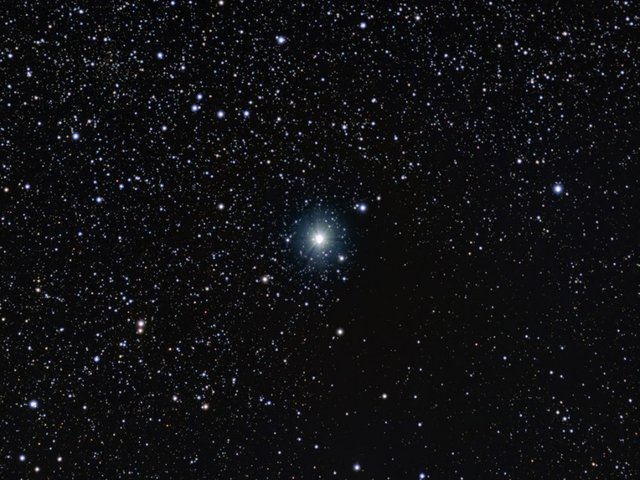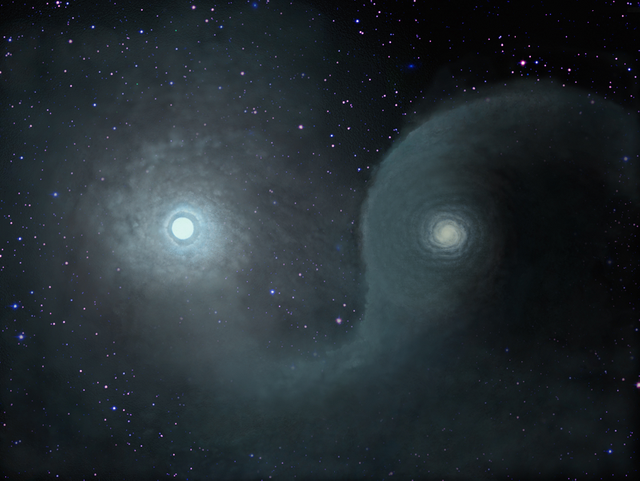The Gaia telescope revealed the riddle of the Epsilon Auriga system.
In 1821, the German astronomer Johann Fritsch discovered that the brightness of the star Epsilon Auriga unexpectedly decreased 2.5 times. After a while, the luminary restored its original shine. In 1848 Epsilon Aurigae again faded. Two years later, the star returned to its "normal" state.

In the course of further observations, astronomers have determined that once in 27 years Epsilon Aurigae experiences an "eclipse", which lasts about 680 days. She also had a slight ripple with a period of about 66 days. As a result, the researchers came to the conclusion that the system of Epsilon Aurigae consists of two components - the main star and periodically eclipsing its more dull companion.
However, the question of the nature of this dull companion remained open. Initial calculations showed that its radius should be 3,000 times greater than the solar one, which made it the largest known star in the universe. However, for an object of this size, the light shone with surprisingly little light. In an attempt to explain the discrepancy, many exotic hypotheses have been put forward. It was suggested that this is a black hole or a kind of "translucent" star. But the greatest popularity in the scientific community was used by the theory that in fact it was a luminary surrounded by a very massive, opaque dust disk.

Observations carried out in 2009 confirmed this version. They showed that the main component of the Ausilon system of the Auriga is a yellow supergiant of the spectral class F, whose radius is 100 to 200 times higher than the solar one. Around him revolves the body, surrounded by a powerful dust disk. At its center is a very hot region corresponding to a star of the spectral class B.
But the story did not end there. Not all astronomers agreed that the main star Epsilon Auriga is a "real" supergiant. It was suggested that in fact it could be a luminary, close to the Sun, but with a very bloated atmosphere.
The 200-year-old riddle of the Epsilon Auriga system was finally solved only thanks to the Gaia telescope. After the publication of the second part of the catalog of his data, the astronomer was able to significantly refine the distance to the system. It turned out that the previous estimates, according to which it was about 6400 light years, were very exaggerated. In fact, the Egret of Auriga is about 1600 light-years from the Sun.
Thanks to this, astronomers recounted the characteristics of the components of the system, and also carried out a computer simulation of its evolution. According to the results obtained, immediately after the formation of Epsilon Aurigae consisted of a pair of stars. The mass of the first exceeded the solar one by a factor of 10, the mass of the second was less than 5 solar.

A less massive component of the system began actively pulling on itself the substance of the companion star. Thanks to the build-up of mass, he evolved much faster than his neighbor. In 20 million years the system has acquired the present form. The mass of the once larger star decreased to just 2.2 solar. The large radius of the luminary and its brightness are explained by the consequences of active loss of matter.
On the contrary, the less massive companion, on the contrary, has grown noticeably in size. Now its mass is 5.9 solar, and it is surrounded by a thick disk consisting of a substance stolen from a neighbor.
Source image:
ttps://apod.nasa.gov/apod/image/1001/EpsilonAurigae_wong900.jpg
ttps://upload.wikimedia.org/wikipedia/commons/thumb/0/00/Epsilon_Aurigae.jpg/1280px-Epsilon_Aurigae.jpg
ttps://upload.wikimedia.org/wikipedia/commons/c/ce/Artistic_rendering_of_the_Epsilon_Aurigae_star_system.png